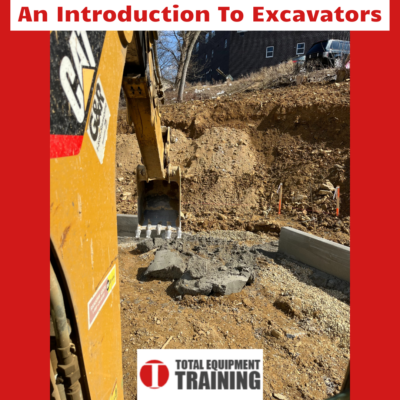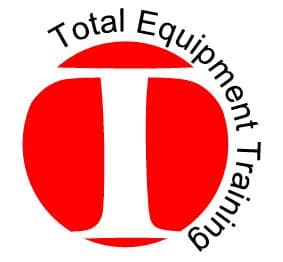
Heavy machinery prides itself on being among the most powerful and widely utilized all over the world. This is from the progress and investment put into their development to make them ever more efficient in safely moving and lifting loads. Among the most popular of these heavy machines is the excavator.
An excavator is a piece of heavy construction equipment consisting of an articulating (jointed) boom, a bucket attached to the boom’s end, housed on a cab from where the boom and bucket are operated. Excavators come in various shapes and sizes depending on their use, with a rotating cab (to move the boom in 360°) and hydraulic-powered boom movement being common features.
Uses of Excavators
An excavator is a very versatile utility, most popularly employed in construction settings. Other uses include:
- Earthmoving – Hydraulic powered booms and bucket attachments enable excavators to dig into and scoop up earth, with capacity only limited by the implement’s size and power output.
- Handling material – Scooping is not limited to earth, but to any similar material, such as construction debris. The bucket attachment can be switched out for pneumatic drills to break hard materials, or clamps, that can grip, lift and move objects such as tree logs.
- Excavation – With auger (drill-type) attachments, excavators can dig out passages underground to various depths.
- Demolition – Using the power of their diesel engines and the tough metal they are made of, excavators can push down walls building sections with relative ease. With different attachments, such as breakers and drills, their destructive capacity is both specialized and increased.
- Forestry and Agriculture – Mulcher, shears and clamp attachments make excavators preferred utilities when it comes to clearing greenery or moving trees.
Types of Excavators
Excavators can be defined by their specific use, but all fall within different size classes.
Size Classification
1. Mini Excavators
This is both a size classification and type of excavator. Their small size and lighter frame allows for minimal ground damage and increased maneuverability in small spaces. Their engines and counterweights are housed beneath the operator cabin, minimizing tail-swing during rotation reducing the risk of contact with obstacles. They generally weigh up to seven metric tons.
2. Standard Excavators
These are the average size and weight class of most excavators. They weigh between seven to 45 metric tons. This allows for sufficient power and utility (through attachments) to handle most jobs.
3. Large Excavators
These giants weigh in at more than 45 metric tons and are best suited for heavy-duty operations. Their unparalleled power output and size allows for movement of earth and material on a large scale, such as in civil engineering and mining operations. Due to their size, however, they are expensive and have low mobility.
Type Classification
1. Crawler Excavators
These are tracked excavators that express better grip on most ground surfaces (gravel or loose dirt). Although slower, they are better suited to scale uneven surfaces and work uneven terrain.
2. Wheeled Excavators
Wheeled excavators run on wheels, powered by front, rear, or all-wheel drives. They are best used on flat surfaces (concrete, asphalt), and can move at higher speed than their chain-wheeled counterparts.
3. Dragline Excavators
These large excavators employ a hoist system attached to the bucket by dragging the bucket over the material surface using ropes and/or chains after excavating material. The operator cabin (base of the boom) then rotates to the dump location and empties the bucket. This different mode of operation makes them ideal for static, heavy-duty operations.
4. Suction/Vacuum Excavators
Their main feature is a suction pipe that blasts a high-pressure jet of water to loosen material, after which it sucks it up for relocation. They are ideal for underground excavation.
5. Skid Steer Excavators
While also operating on wheels, skid steer excavators have no steering mechanism, and turn instead by rotating the right/left wheel pairs at different speeds. This allows for a very small turning radius, fit for tight turns and narrow spaces. Their booms and buckets also face away from the operator, with their boom arms reaching over the operator cabin.
6. Long-Reach Excavators
This type has a longer boom, allowing for operation in hard-to-reach areas.
Safety Guidelines for Excavators
OSHA (Occupational Safety and Health Administration), the national safety regulations authority has official documentation for the safe operation with and around excavators and excavation sites. Some items of note that apply to excavator operation include:
- Proper inspection of the excavator by a competent person.
- Operators should have ample visibility of the work area and any risk posed to people entering/leaving.
- A safety person must be on site (in clear view of operator) during all excavator operation to augment direction and communicate alarm when necessary.
- Site staff should maintain a safe distance from the excavator during operation.
- The operator should be aware and not exceed any manufacturer operational limits.
- Excavator operation only proceeds with ample proximity from live wires, overhead and underground.
Excavator Hazards
OSHA has several rules when it comes to safety guidelines on heavy equipment, most of which also apply to excavators. The major sources of harm or damage during excavator operation are during:
- Moving: While the excavator is in motion, it may strike a person or structure. It may also tip or roll over due to unstable or steep terrain.
- Slewing: A person is trapped between the excavator and a structure or vehicle, especially when tail swing has not been accounted for.
- Working: The attachment and/boom strikes a structure or person, when the attachment falls off or detaches from the excavator, or material in the bucket inadvertently strikes a structure or person.
Excavator Operator Training
Total Equipment Training is a nationally reputed, OSHA-compliant training and inspection organization ready to equip you and/or your team with marketable skills and knowledge in excavator operation. Thanks to an experienced and performance-oriented staff, their qualitative heavy equipment training programs will produce industry professionals across all levels. Reach out to the team today and experience safe and efficient excavator operation.

